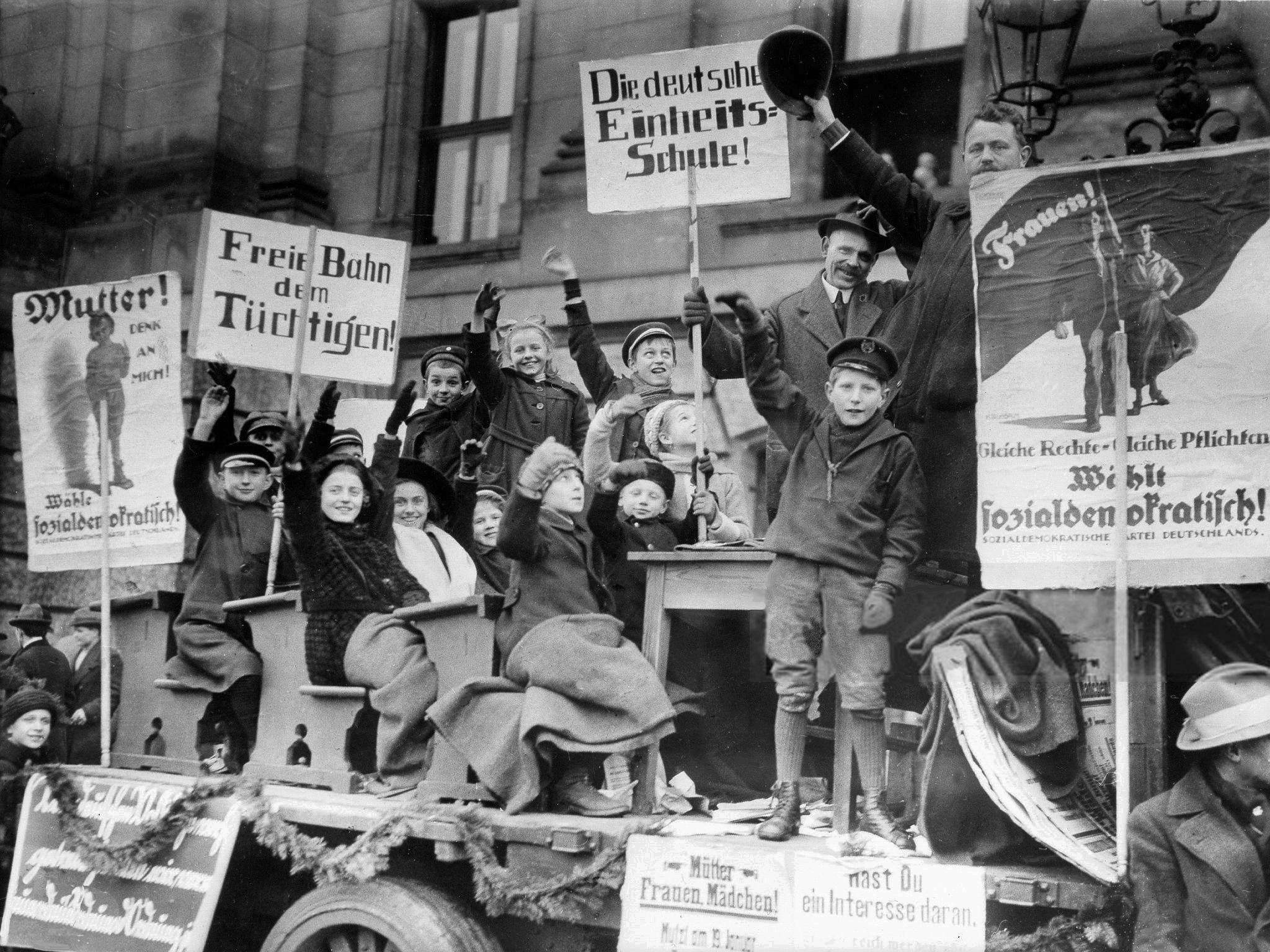The Angel of History

“A Klee drawing named ‘Angelus Novus’ shows an angel looking as though he is about to move away from something he is fixedly contemplating. His eyes are staring, his mouth is open, his wings are spread. This is how one pictures the angel of history. His face is turned toward the past. Where we perceive a chain of events, he sees one single catastrophe that keeps piling ruin upon ruin and hurls it in front of his feet. The angel would like to stay, awaken the dead, and make whole what has been smashed. But a storm is blowing from Paradise; it has got caught in his wings with such violence that the angel can no longer close them. The storm irresistibly propels him into the future to which his back is turned, while the pile of debris before him grows skyward. This storm is what we call progress.”
— Walter Benjamin, “Ninth Thesis
on the Philosophy of History”
1940
Walter Benjamin, a German Jewish literary critic and philosopher, had purchased Klee’s water-color of an angel in Munich for the equivalent of about thirty dollars. His interpretation of the image is not an optimistic one: so-called “historical progress” is a foolish illusion. At the age of forty-eight, he had lived through World War I and its aftermath. Now, in the second year of yet another war, the course of history had been commandeered by fascism, a “catastrophe that keeps piling ruin upon ruin.” The bleak sense of inevitability that Benjamin projects here is contradicted, however, elsewhere in his commentary, where he speaks of “fanning the spark of hope” and a “leap in the open air of history.” And there is a tension that animates the image itself: the eyes of the angel point to one side, while the rest of the body twists just a bit in the opposite direction (or so it seems to me), suggesting arrested motion. Hope is not extinguished, there remains at least the possibility of movement toward a better future.
There had been such hope in the years of the Weimar Republic that replaced the monarchy in Germany at the end of the First World War. Had the Republic been able to survive the aggression unleashed against it by the right, and by the extreme left also, it might have inaugurated a liberating historical journey. For in spite of its dire circumstances, including the punitive Versailles Treaty, the Weimar Republic’s initiatives were dramatic: legally required collective bargaining agreements and unemployment compensation, free public education, a constitution establishing parliamentary democracy and affirming basic human rights. The Republic built railways, bridges, and roads, along with housing for over two million Germans. The Works Councils Act enacted in 1920 gave workers a voice in determining the conditions of their own labor.

Weimar Republic, 1919: The posters urge women to vote social democratic and to support universal access to free, non-religious public education.
In Austria too, the Social Democratic Party (SDAPÖ) fought to advance the interests of the working class. Following the First World War, the Party received strong support in cities, although it had a hard time competing in the countryside. Still, a wide range of social reforms was achieved. Until the fascists took over in 1934, Social Democrats governed in Vienna and succeeded in building 60,000 communal housing units, establishing free medical care, and giving strong support to labor. “Red Vienna,” as it was called, became a world-famous center of achievement in science and the arts. Psychoanalysis was born and flourished in Vienna, and its practitioners opened a clinic that provided free mental care to children as well as adults.
Fascism in Europe sought to kill social democracy, but social democracy refused to die! Progressive policies found new advocates following World War II when forces on the left regrouped and were elected to power in Germany, Austria, Nordic countries, and elsewhere. And although European social democracy certainly didn’t put an end to inequalities and oppression, it did take steps in the right direction.
Here in the United States, the New Deal in the 1930s established social security and supported trade unions, public education, and low-cost housing. In the 1950s and 1960s the Civil Rights Movement combined with other struggles for human dignity to “keep hope alive.”
At the heart of social democracy has always been been a commitment to fight for the working class–ordinary people trying to reach a better life in an unfair system. Labor unions, religious communities, and the Democratic Party have, at their best, sought to unite people of diverse interests and backgrounds behind a shared vision of the common good. This “big tent” approach is needed today too.
The path has never been easy. During the 20th century, human ideals of democracy and justice suffered defeat upon catastrophic defeat. To be sure, history is not marching us to the peaceable kingdom. Yet, despite the failures and irreparable losses, doesn’t the past also demonstrate a lot of human goodness and cooperation? History is waiting for us to create the relationships–across the generations, across boundaries of every kind–that will permit Benjamin’s angel at last to take wing.


